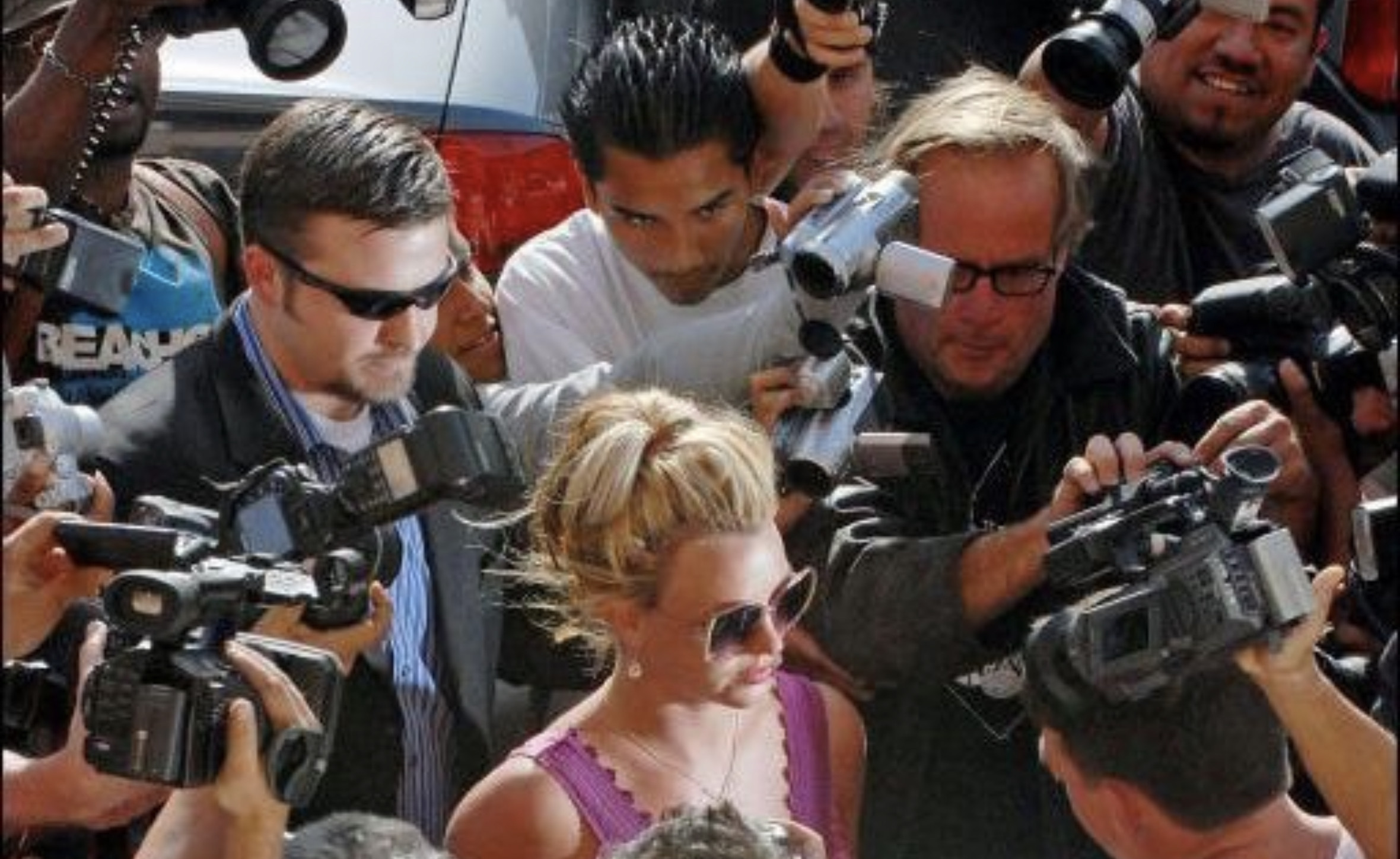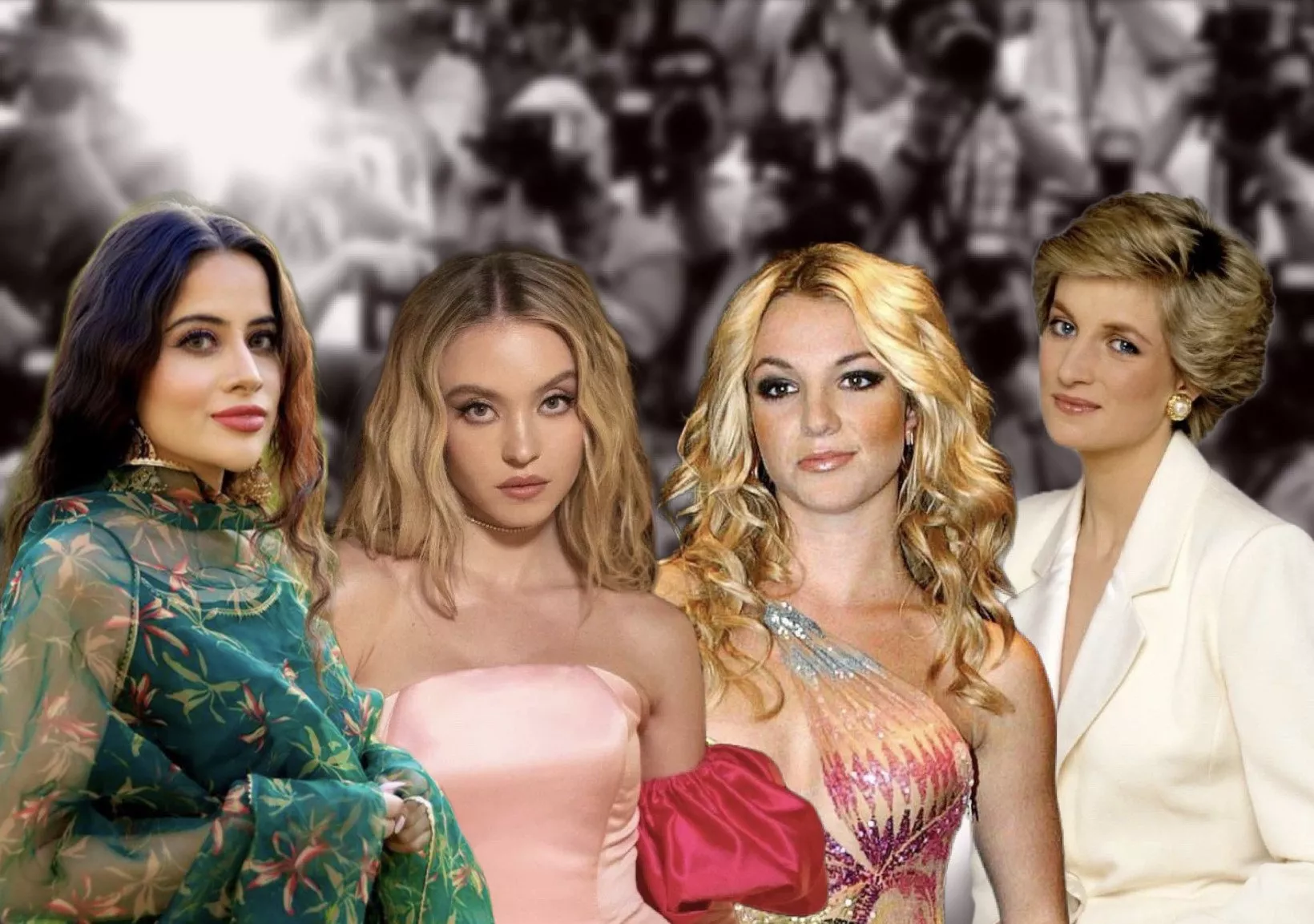Paps and their prey: How paparazzi tend to cross the line with female celebrities
Can these actions really be excused by slapping a ‘public interest’ label on them
LONDON:When it comes to stardom, one constant is the omnipresence of paparazzi—their flashes reflecting a kind of fame-induced cat-and-mouse game that has become a central part of being a celebrity. Yet this relationship, often seen as symbiotic, has its darker, more predatory layers, especially when it comes to the treatment of women in the public eye.
Uorfi Javed, the internet personality from India, often in the headlines for her daring and outlandish fashion choices, was newsworthy for an entirely different reason recently. Her love-hate relationship with the paparazzi took a sharp turn when she called them out on Instagram for their disrespectful comments.

Uorfi’s post which has since then been deleted, read: “I love you all very dearly, you guys are a big part of my journey. I've said it multiple times I love and enjoy getting papped but recently that has changed. The sly comments passed by the paps makes me extremely uncomfortable especially when I rewatch the pap videos on my phone.” She then made a humble request: “Let's all be mindful. I've always tried treating all of you with immense respect and in return I expect the same.” Her post was not merely a call for professionalism but an implicit critique of the deeper issue—how women, particularly those like Uorfi who defy traditional norms, are treated with a stark lack of dignity.

A similar narrative unfolded in Hollywood with Euphoria star Sydney Sweeney. In a recent interview with Glamour Magazine, Sydney shared a disturbing encounter where paparazzi approached her family outside her home. The photographers had the nerve to suggest that if the actor came outside in a bikini, they would take their pictures and leave her family alone. It wasn’t just an invasion of her privacy but a terrifyingly casual proposition that turned her body into a transactional object. Both Uorfi and Sydney’s experiences expose a misogynistic undercurrent that defines the paparazzi’s treatment of women they deem “brazen” or hold in lower regard.
The female experience 
This predatory nature of paparazzi culture when it comes to female celerities is hardly a new phenomenon. One of the most tragic and infamous examples is the story of Princess Diana, whose life was irrevocably shaped—and ultimately taken—by the relentless pursuit of paparazzi. Diana’s relationship with the press began as an adoring one, but the more she defied royal convention, the more intensely invasive their coverage became.
In the most devastating turn of events, Diana’s death in 1997 was, by all accounts, directly linked to this invasive pursuit. On the night of her fatal car crash, paparazzi were chasing her vehicle, desperate for pictures. The press, often portrayed as a necessary part of public life, can cross a line where it shifts from documenting to devouring.
Yet it seems this aggressive approach is disproportionately aimed at women, especially those seen as “rebellious” or daring in their public personas. One could argue that the difference in how male and female celebrities are treated by the press is startling. The more a woman pushes against societal expectations, the more viciously she is hounded. Consider how the media treated Britney Spears during the peak of her fame, portraying her as mentally unstable when she made decisions that didn’t conform to the image they had constructed. Male celebrities, on the other hand, tend to receive a softer touch. They don’t have to worry about how they dress when they leave the house lest they be accused of being pregnant when in reality they probably just overate at lunch.
The difficult debate
The question that inevitably arises is whether celebrities have a right to privacy at all. After all, they chose to live their lives in the public eye, and with fame comes the expectation of constant visibility. Some might argue that when a person signs up for celebrity status, they are essentially agreeing to the lack of personal space and that the public, and by extension the paparazzi, have a right to access their lives. Paparazzi often defend their behaviour under the guise of public interest. In their eyes, celebrities belong to the world, and every facet of their life—public or private—is fair game.
But what is public interest? Is it truly in the public’s interest to see candid pictures of a celebrity walking their dog or stepping out in sweatpants to buy groceries with their children? The problem is that when paparazzi overstep, they dehumanise these individuals, reducing their existence to a series of snapshots that are taken without consent.
One could also argue that celebrities indeed use the media to their advantage when it suits them. From meticulously arranged photoshoots to strategically placed “candid” shots, there is a deliberate cultivation of the public’s fascination. Celebrities often use paparazzi to stay relevant, making their relationship with the press a double-edged sword. The media cycle feeds off these orchestrated moments, and celebrities benefit from the increased visibility, whether through film roles, endorsements, or social media followers. However, when this visibility turns into harassment, when the lines between public and private blur beyond recognition, the situation becomes untenable. There is also a fine line between critique and shaming, a line that neither celebrities, paps, nor fans have come to terms with.
Have something to add to the story? Share it in the comments below.


COMMENTS
Comments are moderated and generally will be posted if they are on-topic and not abusive.
For more information, please see our Comments FAQ